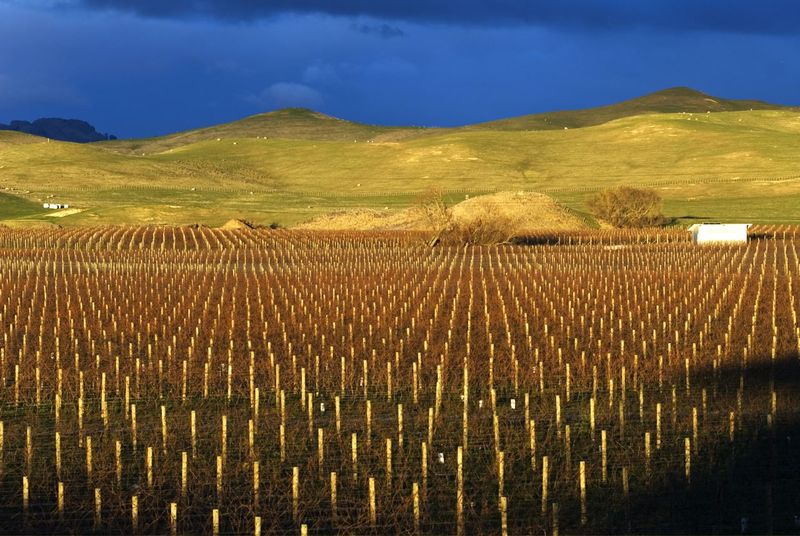It’s not only New Zealand’s cricketers that are enjoying their time in the sun; Hawke’s Bay winemakers seem to have a renewed energy and confidence, no doubt springing from two smashing vintages on the trot – 2013 and 2014.
While I harp on and on about the merits of New Zealand Syrah, the region makes a lot more Merlot and Cabernet, accounting for 80% of all red ‘Bordeaux’ plantings in New Zealand. And it does it pretty darn well but that’s not new news, as Te Mata winemaker, Peter Cowley, pointed out at a recent seminar. “On a visit to Hawke’s Bay in 1964 Andre Simon was complimentary about a 1912 Claret and a 1949 Cabernet Sauvignon,” he said.
And unlike Syrah, there are enough Bordeaux reds planted to make a splash in the wine world. “Our 1550 hectares are in the same ballpark as Margaret River and twice those of Pomerol. They are about half the size of the Coonawarra plantings and a quarter those of Saint Emilion, the Medoc and Napa,” added Cowley.
The Hawke’s Bay offers everything from a straight Merlot or Cabernet to a full on melting vat of Bordeaux varieties in one bottle but the region is slowly hoping its blended wines can cut the leash from its association with Bordeaux.
“We try not to call the style Bordeaux blends for obvious reasons and so the term Hawke’s Bay blends is coming into use,” he said. That may be a few centuries in the making, however.
So what’s the secret to making good Hawke’s Bay blends?
The soils – most a variation on a theme of gravel over sandy loams and the temperate maritime climate – 1470 growing degree days put the climate somewhere closer to Bordeaux (1370) and Coonawarra (1440) than Napa (1620).
Summer days only reach 30 degrees on the odd occasion. “Sunburn is not an issue at these temperatures. By leaf removal we expose our red fruit to much more light than is possible in warmer regions. Again this encourages tannin and colour development but also results in pure, bright fruit flavour,” added Cowley.
The resulting wines look like Bordeaux in a warmer year, offering ripe fruit with classical structure, fine-grained tannins and firm acidity.
Inevitably, the winemaker also plays his or her part, and money has flowed into the region, including overseas investment: entrepreneur Terry Peabody owns Craggy Range and American wine venture capitalist Charles Banks has recently bought a stake in Trinity Hill. Osawa is Japanese-owned. Clearly they see something worthwhile in the region.
When the wines are good they’re excellent. Te Mata’s Coleraine, Craggy Range’s Sophia, Mills Reef’s Elspeth and Sacred Hill’s The Helmsman are consistently world class – even in poor vintages.
Admittedly, there are still a lot of middle of the road wines that lack density or can be sullied by a heavy hand on the oak front. But the same could be said of any wine region.
While 2011 and 2012 were difficult vintages, 2013 has given us something to smile about. The recent release has produced very few duds with an excellent standard across the board.
Here are a few wines that bowled me over recently, including my first 96 pointer in more than a year.
2013 Te Mata Coleraine
2013 Craggy Range Sophia
2013 Paritua 21.12
* Image: Paritua Vineyards, courtesy of NZ Winegrowers

